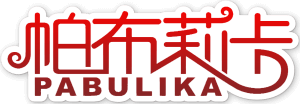prune
基本释义
[verb] trim (a tree, shrub, or bush) by cutting away dead or overgrown branches or stems, especially to encourage growth
[动词] 通过切除枯死的或蔓生的枝或茎来修剪(树木、灌木或灌木丛),尤指为了促进其生长
深入解读
Prune 是一个与小站一个月前推送过的 prone 十分形似的单词,只隔中间一个字母不同。该词可能源自拉丁语 rotundus (圆的、圆形的),14世纪末期经古法语 proignier (修剪树枝、修剪藤本)进入英语后原用来延伸指鸟“用喙修整羽毛”,不过现在这个含义是用其变体 preen (用喙整理羽毛)表示。
但从鸟用喙修整羽毛这个概念出发,则在15世纪初就开始用 prune 泛指“裁减、削减、精简”,多指删掉无用多余或有害的东西,比如:
- 员工的数量因成本急剧上升已精简到180人。
Staff numbers have been pruned back to 180 due to spiralling costs. - 那个著名建筑师不断地修改这个设计已经好长时间了。我想现在他正在把无关紧要的细节统统删掉。
The eminent architect has been fiddling about with this design for ages. I guess he is pruning out any unnecessary details now.
而到了16世纪40年代, prune 又另行借用自上面说的法语单词 proignier (修剪树枝、修剪藤本),开始用来表示其本义“修剪树枝、打杈”,并发展成现在的主要含义,多指通过修剪树木、灌木、灌木丛等的枯枝、蔓生枝条等来不仅改善其形状,更促进其生长或结果,比如:
- 那天发生的事只剩一片模糊的记忆。我只记得她用下午的时间修剪了玫瑰。
The events of that day were just a blur. I only remember that she spent the afternoon pruning roses.
值得注意的是, prune 同之前推送过的 kindle, lean, toll 等一样也是一个同形异义词,还有一个含义源自古希腊语 proumnon (李子、梅子),14世纪中期进入英语后本也是用来表示“李子、梅子”,不过现在更多的是用其指“李子干、西梅干、梅子干”。
与之相关的习语 prunes and prism(s) 表示言行的“装腔作势、矫揉造作”则是出自狄更斯的小说《小杜丽 》(Little Dorrit),因说 prunes 和 prism (棱镜;棱柱、棱柱体)等词时嘴型比较好看引申而来。
影视例句
Let us preserve what must be preserved, perfect what can be perfected and prune practices that ought to be prohibited.
让我们保留必须保留的,改进能够改进的,并取缔那些应该禁止的行为。
出自2007年上映的魔幻冒险片《哈利波特与凤凰社》(Harry Potter and the Order of the Phoenix)。
外刊例句
- Portugal’s prime minister is planning a drastic but timely pruning.
葡萄牙总理正计划进行一次大幅度但及时的精简。
——《经济学人》 - In the future, sleep medicines might precisely target the molecules involved in sleep, ensuring that synapses get properly pruned.
在将来,睡眠药物或许可以精确瞄准参与睡眠的分子,确保突触得到适当的修剪。
——《纽约时报》
AI释义
词源: “prune” 这个词源于古法语中的 “prune”,源自拉丁语的 “pruna”,意为 “干梅子”。它在英语中既可作为名词,表示干梅子,也可作为动词,表示修剪、修整。
用法: “prune” 可以作为名词和动词使用。
名词用法:
- 干梅子:指晒干的梅子,通常用作食品或作为烹饪配料。
动词用法:
- 修剪:指修剪树木、灌木或植物的枝条、根部或花朵,以促进健康生长和形状美观。
- 精简:指去除多余、不必要或低效的部分,使其更加简洁、高效或精确。
例句: 名词:
- She enjoyed snacking on dried prunes. (她喜欢吃干梅子作为零食。)
动词:
- The gardener pruned the trees to promote healthy growth. (园丁修剪了树木,促进了健康生长。)
- The company decided to prune unnecessary expenses. (公司决定削减不必要的开支。)
常见短语:
- Prune trees (修剪树木)
- Prune branches (修剪树枝)
- Prune shrubs (修剪灌木)
- Prune flowers (修剪花朵)
- Prune back (修剪、削减)
文化背景: “prune” 这个词在农业、园艺和烹饪等领域有着重要的文化背景。在园艺中,修剪树木和植物是维护植物健康和形状的常见操作。而在烹饪中,干梅子常用于制作果酱、馅料和甜点等。此外,”prune” 这个词在扩展意义上也用于描述对其他事物的精简、修整或削减,比如修剪开支、精简文稿等。
总结: “prune” 是一个既可作为名词表示干梅子,又可作为动词表示修剪或精简的英语单词。常见短语包括 “Prune trees”(修剪树木)、”Prune branches”(修剪树枝)和 “Prune back”(修剪、削减)等。
同近义词
clip: cut short or trim (hair, vegetation, etc.) with shears or scissors
shear: cut off (something such as hair, wool, or grass), with scissors or shears
trim: make (something) neat or of the required size or form by cutting away irregular or unwanted parts

















